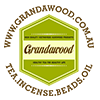Menu
-
-
F.A.Q
- How to identify genuine agarwood chip, natural or cultivated
- How to identify oil injection / absorption fake agarwood beads
- How to know if there are more than one oil in your oil
- How to make your wood bracelet or mala darker
- How to tell if an Agarwood bead sinks WITHOUT sinking it under water?
- How does back flow incense work and how do you burn it?
- Where to start if you don't know what agarwood is ?
- Why are you losing money if you buy seeds and plants?
- Which agarwood incense should I choose?
- Frequently Asked Questions
- Agarwood Related Articles
- Shipping
-
SHOP - Agarwood
-
SHOP - Other Fragrant Wood
-
SHOP - Incense Holder and Burner
-
- FREE Oud Oil guide
- Testimonials
- "Why did you buy this?"
- Contact us
- About Us
- +61430284329
- Login
-
English


Does Arabian Oud come from Arab countries?
February 25, 2023 4 min read
Some people have asked me two common questions:
"Is Arabian oud from Arab countries?"
"Why is your Vietnamese oud more expensive than Arabian oud?"
Today, I will address these questions.
First, it is important to know that Arabian oud is a general term. It refers to fragrance oils or perfume oils that may contain pure oud—also known as agarwood oil. This term is not specific to any brand. The word "Arabian" relates to Arabia, and "oud" is the Arabic term for agarwood. While Arabian oud is widely known in the luxurious fragrance world, it does not refer to a particular product.
Many friends and clients from the Middle East have shared their insights on Arabian oud with me. They often describe it as having woody scents or oriental tones, though it can vary. Some are spicy, while others are more earthy. When trying some samples given by friends, I was pleasantly surprised to find refreshing citrus blends in some feminine fragrances that fall under the Arabian oud category. These unisex fragrances are known for their elegance, blending traditional richness with refreshing notes.
Does Arabian Oud come from Arab countries?
There is a common misunderstanding about where Arabian oud originates. Many assume it comes from the Arab world, but while it is often manufactured in the Middle East, the pure oud (or agarwood) itself comes from Southeast Asia. This region has been producing oud for centuries, and it has spread to different parts of the world. If you want to experience oud in its raw form truly, you should visit Southeast Asia, especially Vietnam, which is known for producing some of the finest premium oud in the world.
Why is your Vietnamese Oud more expensive than Arabian Oud?
This question touches on two key issues.
First, the term Arabian oud is often misunderstood. While Vietnamese and Cambodian oud refer to the agarwood from those countries, Arabian oud does not refer to a particular location where oud is grown. The Aquilaria trees, which produce oud, do not thrive in the Middle Eastern climate. Instead, Arabian oud often refers to products like attars, mukhallats, or perfumes created with majestic special oud blends.
Second, pricing varies depending on production. The cost of raw materials, labour, and brand influence pricing. If the brand behind Arabian oud is prestigious and the product contains genuine oud, the price could be higher than Vietnamese oud. However, the cost will naturally be lower if synthetic materials are used in the blend. My Vietnamese oud, however, represents the raw material itself, whereas Arabian oud often refers to the final product.
In some cases, you may see a brand using a mix of ingredients or a synthetic version to create Arabian oud, which makes it more affordable. When you purchase a premium Vietnamese oud product, it is directly from the source—the unique earthiness and rich history of pure oud speak for themselves.
The Origins of Oud
Aquilaria trees, which produce oud when infected, are native to Southeast Asia. They grow in places like China, Indonesia, Malaysia, Thailand and Vietnam. These trees are also cultivated in other regions, including Australia, where sustainable farming is popular. Generally, the older the agarwood, the deeper scents it can produce making it more valuable
The history of oud is ancient, dating back to Egypt, where it was used for religious and medicinal purposes. It is even referred to as "aloes" in the Bible. China also valued oud for its role in traditional medicine and high-end perfumes.
Oud has been an integral part of culture in the Middle East for centuries. Arabic perfumes, often made with pure oud oil and blended with other essential oils, have been revered. In these traditional perfumes, oud acts as a fixative, prolonging the scent on the skin and clothing. Its role in perfumery continues today with products ranging from men's fragrances to unisex fragrances, where its alluring depth makes it so captivating.
In Middle Eastern cultures, people love complex and rich scents, including the so-called “barnyard” note found in some oud and agarwood oils. This barnyard note can be earthy, leathery and musky and is often considered a sign of high quality and aged agarwood. This is achieved through the fermentation process during the production of oud oil, which can produce deep animalic notes.
At Grandawood, we have two types of Oudh oil that are appreciated in the Middle East:
The Middle Easterner: done "just-right" barnyard, perfumers love it !
The Peated Oud: smoky Peated, light creamy barnyard produced via the Co2 extracted method
Not all Middle Easterners may like this scent as it’s a matter of personal taste. But those who appreciate traditional oud and its complexity value these intense and earthy notes. In fact some of the most sought-after oud oils in the region have a strong animalic character that blends beautifully with amber, rose or spices in traditional perfumery.
The Silk Road and Oud's Spread
The Silk Road trade routes played a key role in spreading oud from Southeast Asia to the Middle East, Africa, and Europe. Alongside goods like spices, silk, and precious metals, agarwood became a prized commodity for its distinct fragrance.
In the Islamic Golden Age, Arab attar gained fame as a spiritual and luxurious scent. Today, oud is just as popular, if not more so, with many luxury collections incorporating this beguiling fragrance. Whether genuine or synthetic, it offers consumers the choice between tradition and affordability.
A Timeless, Luxurious Scent
Oud has become popular worldwide, especially in the Western world, where its rich and exotic scent is sought after. Today, many fragrance houses create elegant collections of Arabian oud, mixing it with refreshing notes, or combining it with ingredients like rosewood, creating trending blends that appeal to all.
As for Al Oud, this term refers to "The Oud" or "The Agarwood" in Arabic. In perfumery, it signifies the purest and most inspired form of oud, symbolising its deep-rooted tradition and spiritual heritage. Whether you crave luxury or seek a connection to the past, Al Oud delivers an authentic, luxurious fragrance experience.
Leave a comment
Comments will be approved before showing up.
Also in News

What is Tasbih? The Deep Meaning of Subhan Allah and the Role of Prayer Beads
November 09, 2025 4 min read

